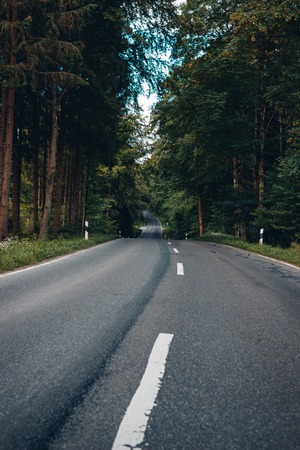Introduction to Sustainable Warmth in the UK Outdoors
Camping across the British Isles is an experience both cherished and challenging, especially when it comes to staying warm in unpredictable weather. From the blustery highlands of Scotland to the rain-soaked valleys of Wales, the UK’s climate demands resilience and careful preparation from outdoor enthusiasts. However, as more Britons embrace camping, hiking, and wild adventures, there’s a growing recognition that our survival tactics must also protect the very landscapes we love. Traditional methods of keeping warm—like burning disposable fuels or using energy-hungry gear—can harm delicate ecosystems and contribute to carbon emissions. Today, forward-thinking campers are turning towards eco-friendly innovations and sustainable practices that balance personal comfort with environmental responsibility. This article explores how you can stay snug on your next adventure, using British ingenuity and green solutions that preserve our wild spaces for future generations.
2. British-Born Innovations for Eco-Friendly Heating
When it comes to sustainable outdoor living, Britain stands at the forefront of pioneering practical solutions for eco-conscious adventurers. The unpredictable British weather has inspired a range of home-grown technologies designed to keep campers warm without compromising the environment. Here’s a look at some standout innovations that have shaped modern, sustainable camping.
Solar-Powered Gear: Harnessing the UK’s Light
Despite the famously grey skies, British innovators have developed solar-powered heating gear that makes the most of every ray. Portable solar panels and compact solar-charged hand warmers, often designed in London or Manchester tech hubs, are now indispensable for eco-minded campers. These devices not only reduce reliance on disposable batteries but also provide reliable warmth off-grid—a true game-changer when wild camping in the Highlands or by Cornish cliffs.
Recycled-Material Thermal Blankets: Warmth with a Conscience
British brands have led the way in transforming waste into warmth. Thermal blankets and sleeping bag liners made from recycled plastic bottles are increasingly common on the market. These products deliver impressive insulation while giving a new lease of life to materials that would otherwise clog up UK landfills. Below is a comparison of popular options:
| Brand | Main Material | Thermal Efficiency | Eco Credentials |
|---|---|---|---|
| Vango Eco Blanket | 100% Recycled PET | High (tog 8) | Bottle-to-blanket process, UK-based production |
| Lakeland Fells Liner | Recycled nylon/polyester blend | Medium-High (tog 6) | Locally sourced materials, low-carbon manufacturing |
| Green Trail Comforter | Repurposed textiles | Medium (tog 5) | Community-driven recycling initiatives |
Renewable-Fuel Stoves: Tradition Meets Innovation
The classic British camping stove has been reimagined with sustainability in mind. Several UK startups now produce stoves fuelled by wood pellets, compressed sawdust, or even locally gathered twigs—eliminating single-use gas canisters altogether. Notably, some models integrate heat exchangers and wind shields developed specifically for blustery British campsites, ensuring efficient burn and minimal smoke output.
Pioneering Solutions at a Glance
| Innovation | Sustainability Benefit | Notable British Brand/Originator |
|---|---|---|
| Solar Hand Warmers | No battery waste, renewable energy use | PocketSun Gear (London) |
| Recycled Thermal Blankets | Circular economy, landfill reduction | Vango (Scotland) |
| Wood Pellet Camping Stoves | No fossil fuels, local resource utilisation | Ecolite Stove Co. (Wales) |
The Future is Local—and Green
The drive for sustainable warmth has deep roots in British ingenuity. As more campers demand green solutions, expect to see further breakthroughs that combine technical know-how with respect for Britain’s wild places. By choosing these homegrown innovations, you’ll not only stay warm but also tread lighter on the landscape—just as any seasoned Brit would want.

Green Layering: Sustainable Clothing and Insulation
When the British weather turns biting, keeping warm sustainably is both an art and a necessity. Instead of relying on synthetic fibres that shed microplastics, savvy UK campers are turning to home-grown eco-friendly alternatives. The first rule of green layering is to build your warmth from the skin out, using materials that are kind to both body and planet.
Choose British-Made Thermal Wear
Start with a solid base layer crafted in the UK from organic cotton or recycled merino wool. These materials not only trap heat but also wick moisture away, preventing chills when you’re active outdoors. Seek out brands that prioritise local manufacturing and transparent supply chains—think Finisterre or BAM Bamboo Clothing—ensuring your thermal wear hasn’t clocked up needless air miles.
Invest in Woollens over Synthetics
Wool has been Britain’s cold-weather ally for centuries. Opt for jumpers, socks, and beanies spun from British sheep breeds like Bluefaced Leicester or Shetland. Wool is naturally insulating, breathable, and biodegradable—a far cry from petroleum-based fleeces. Check labels for assurance that your knits are mulesing-free and sourced from ethical farms.
Layer Smartly for Maximum Warmth
The trick lies in multiple thin layers rather than one bulky jacket. Begin with your base, add a mid-layer (such as a thick wool jumper), then finish with a windproof, water-resistant shell made from recycled materials. This approach traps pockets of air for insulation while allowing freedom of movement—a must when pitching tents or gathering firewood on blustery moors.
By making conscious choices—favouring UK-made natural fibres and mastering effective layering techniques—you’ll stay toasty without contributing to synthetic pollution. It’s survival smarts with a clear conscience: just how the British wilderness intended.
4. Fire Without Footprint: Responsible Camp Heating
In the heart of the British countryside, nothing beats the primal comfort of a campfire—except doing it without leaving a scar on the landscape. Traditional fire-making can be destructive, but with a hard-nosed approach and modern British ingenuity, you can enjoy warmth responsibly. The key is embracing low-impact fire practices and local, sustainable fuels that honour both nature and heritage.
Leave-No-Trace Campfires: British Techniques
Brits have mastered subtlety when it comes to wild camping. Instead of digging deep fire pits or scorching earth, use a raised fire bowl or portable fire pan. These tools shield the ground, preventing lasting burns. For added stealth, the “mound fire” method—a classic among UK bushcrafters—involves building a shallow mound of mineral soil or gravel on a tarp, then lighting your fire atop it. When finished, simply scatter the cold ashes and return the soil; no trace left behind.
Sustainable Fuels: Sourcing Local and Green
Choosing the right fuel is as critical as how you burn it. In Britain’s wooded glens and moors, responsible campers gather only deadwood already on the ground—never breaking branches from living trees. Native hardwoods like ash, beech, and oak burn cleaner and hotter than softwoods, reducing smoke and soot. For ultra-sustainability, consider bringing compressed sawdust logs or eco-briquettes made from recycled materials, both readily available across the UK.
Comparison Table: Sustainable Fuel Options
| Fuel Type | Source | Burn Quality | Environmental Impact |
|---|---|---|---|
| Deadwood (Native Hardwood) | Locally foraged | Hot, clean burn | Low if collected responsibly |
| Eco-Briquettes | Recycled sawdust/biomass (UK-made) | Consistent heat, minimal smoke | Very low; uses waste material |
| Compressed Wood Logs | Sustainably sourced wood (UK suppliers) | Long-lasting flame | Sustainable if FSC certified |
Quick Tips for Low-Impact Fires
- Avoid peat and coal—these leave long-term scars and are high in carbon emissions.
- If possible, use a portable stove or contained burner; they’re widely used by UK hillwalkers for their efficiency and minimal impact.
- Douse fires thoroughly with water—not just dirt—and disperse cold ash to keep wild spaces pristine.
The British ethos of ‘take only memories, leave only footprints’ isn’t just sentiment—it’s survival wisdom. With these techniques and choices, you’ll keep warm while keeping Britain wild for generations to come.
5. Energy-Efficient Shelter Setup
Pitching for Warmth: British Know-How
When camping in the unpredictable British climate, strategic tent pitching can make a world of difference to your warmth and comfort. Always aim to pitch your tent with the rear facing the prevailing wind—typically from the west or southwest in the UK. This minimises wind chill while reducing the risk of drafts and heat loss. Positioning your entrance away from open fields and towards natural windbreaks like hedgerows or low stone walls adds another layer of protection, using classic countryside features to your advantage.
Improvised Windbreaks: Sustainable Solutions
If natural barriers are scarce, set up eco-friendly windbreaks using locally sourced materials such as fallen branches or reusable canvas screens. Avoid damaging live trees or disturbing habitats; instead, use what’s already on the ground. British-made reusable windbreaks, often seen at campsites from Cornwall to Cumbria, offer a practical and sustainable way to shield your shelter. Deploy these around your tent’s most exposed sides for maximum effect—think of it as building a fortress against those bracing North Sea gusts.
Eco-Insulating Ground Mats: Stay Off the Cold Earth
The ground is a notorious thief of body heat in British campsites, especially during damp spring nights or chilly autumn bivvies. Swap out disposable foam pads for UK-available eco-insulating mats made from recycled or renewable materials. Look for brands prioritising sustainability—many now use recycled polyester or organic wool fillings. Lay an extra layer beneath your sleeping area (even repurposed picnic blankets do the job), ensuring you’re insulated from cold and moisture without resorting to single-use plastics. This simple measure can keep you significantly warmer through the night while maintaining a green footprint.
Top Tip:
For added efficiency, seal tent edges with clothing bags or dry sacks stuffed along the inner perimeter. This blocks drafts and traps precious warmth, especially if you’re wild camping on blustery moorland.
6. British Community and Tradition: Shared Warmth and Group Gear
One of the most enduring aspects of British camping culture is the emphasis on community and collective effort, especially when it comes to staying warm in unpredictable UK weather. Rather than everyone fending for themselves, it’s common practice to pool resources—think communal heated spaces like large canvas bell tents equipped with eco-friendly wood-burning stoves or shared thermal shelters at campsites. These shared environments not only save energy but also foster camaraderie, turning chilly nights into memorable social experiences.
Communal Heated Spaces: The Heart of UK Campsites
Across Britain, many campsites now feature shared facilities where warmth is prioritised sustainably. For instance, heated yurts or lodges powered by biomass boilers or solar panels provide a central hub for groups to gather without the need for individual gas heaters or disposable fuels. This approach reduces overall energy consumption and significantly lowers the carbon footprint of group camping trips.
Sharing Equipment: Reducing Waste and Enhancing Experience
It’s also tradition in the UK for campers to share gear—whether it’s high-performance insulated blankets, rechargeable lanterns, or even portable wind-powered generators. Instead of every camper bringing their own, group coordination ensures that quality kit is used to its full potential while minimising unnecessary duplication. This not only cuts down on waste but also makes sustainable equipment more accessible and affordable for everyone involved.
British Brands Leading Sustainable Group Solutions
Several British outdoor brands are now focusing on eco-friendly group gear designed with communal use in mind. Companies such as Vango and Outwell offer robust tents made from recycled materials, modular camp kitchens that reduce single-use plastics, and innovative heating solutions like bioethanol stoves suitable for group settings. These homegrown innovations highlight how tradition and sustainability can go hand-in-hand, making the British approach to camping both environmentally conscious and deeply rooted in community spirit.
Embracing these customs—sharing warmth, resources, and responsibilities—not only keeps you cosy but also reinforces a uniquely British ethos: that surviving (and thriving) outdoors is best done together, with respect for both people and the planet.
7. Conclusion: Minimising Environmental Impact While Staying Warm
Embracing a blend of time-tested British ingenuity and contemporary eco-friendly camping solutions is the way forward for outdoor enthusiasts who care about both comfort and conservation. By incorporating sustainable materials, energy-efficient gear, and traditional methods such as layering with natural fibres or using hot water bottles, campers can stay warm without leaving a heavy footprint on the countryside. Modern British innovations like recycled-insulation sleeping bags, portable solar panels, and responsibly sourced firewood add another layer of environmental stewardship to classic practices. Ultimately, adopting these strategies means you’re not just surviving the elements—you’re thriving in them while respecting the wild spaces that make Britain’s outdoors so special. With thoughtful preparation and a commitment to green principles, it’s entirely possible to enjoy warmth, safety, and sustainability in perfect harmony.


